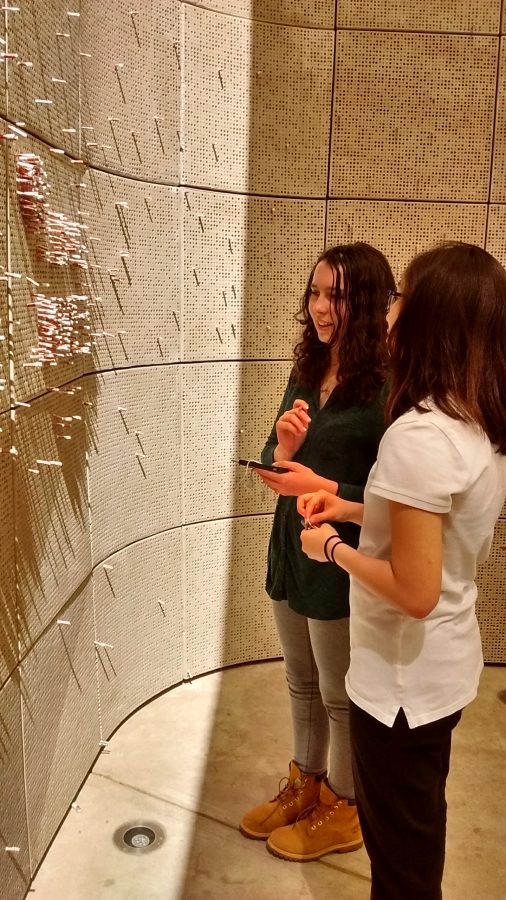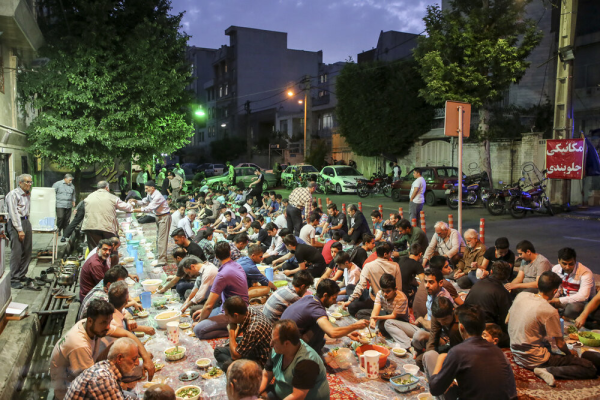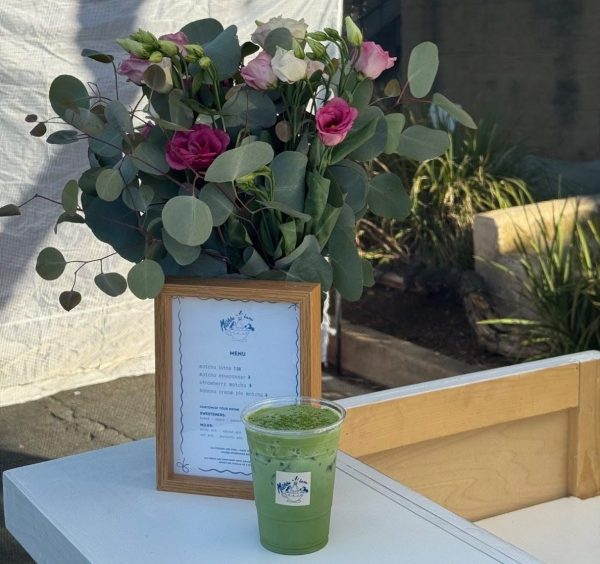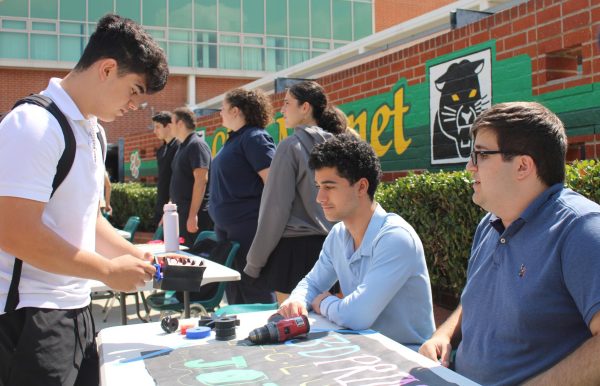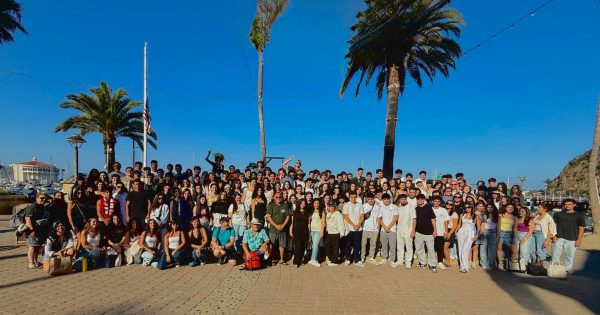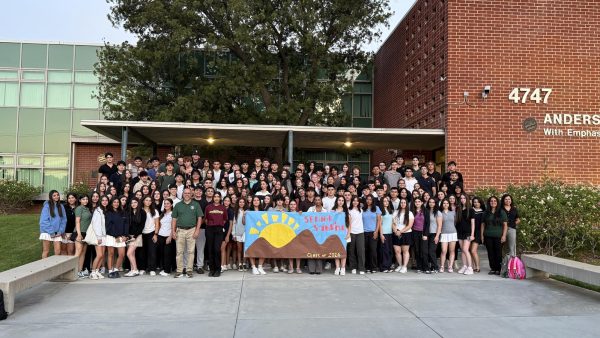Humanities students are exposed to the darker side of humanity at the LA Museum of the Holocaust
Sophomores Madalynn Carr and Christine Chang observe a wall with 1.2 million holes, representing the number of children killed in the Holocaust. Inside some of the holes are paper cutouts visitors can take from a box and insert into the holes. The cutouts feature the photos and names of children who perished. Visitors can write little prayers or reflections on them.
On March 29, 140 sophomores from Christopher and Jennifer Davis’ Humanities classes visited the Los Angeles Museum of the Holocaust. The museum is free and offers a wealth of artifacts, models, videos, photos and exhibits encompassing all the stages of the Holocaust. “The founding survivors insisted that no visitors ever be turned away from learning about the Holocaust for lack of an entry fee,” according to the Museum’s website.
This was the fourth year Clark sophomores have gone to the museum. Previously they went to the Los Angeles Museum of Tolerance, which focuses strongly on the Holocaust but also covers other atrocities and discrimination.
“It was very eye opening to all the hate in the world,” said sophomore Edwin Stepanyan. Students had the opportunity to listen to actual survivors of the Holocaust. “This visit, one group students heard from a woman named Elizabeth Mann, and she was in Auschwitz,” said English teacher Jennifer Davis. “She’s in her 90s now. We’re losing those voices of people who really were survivors, the same way the Armenian genocide has lost voices.”
The second group of student listened to a survivor who was a child at the time. She was never interned, but her family moved constantly and she lost her father, who was captured by the Nazis.
The trip tied into the sophomores’ Humanities curriculum. They learn about World War II and the Holocaust, as well as other genocides in history “with the awareness of the great inhumanity that man perpetrates against man,” Davis said. “I think that when kids hear that firsthand experience, it really makes it more than just reading Elie Wiesel’s words or a statistic in a history book, it brings it to life.”



